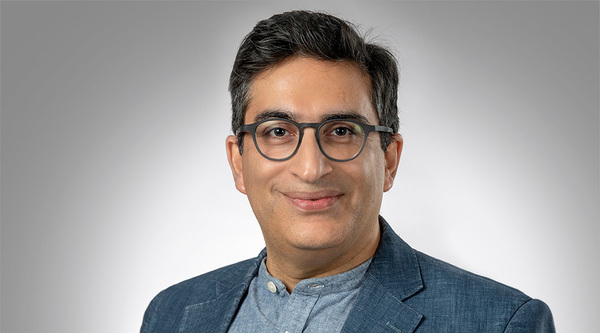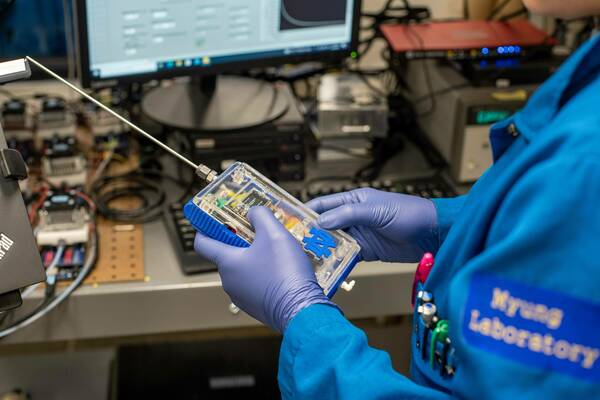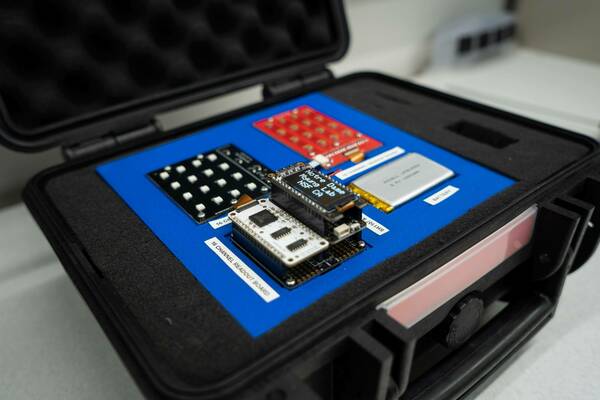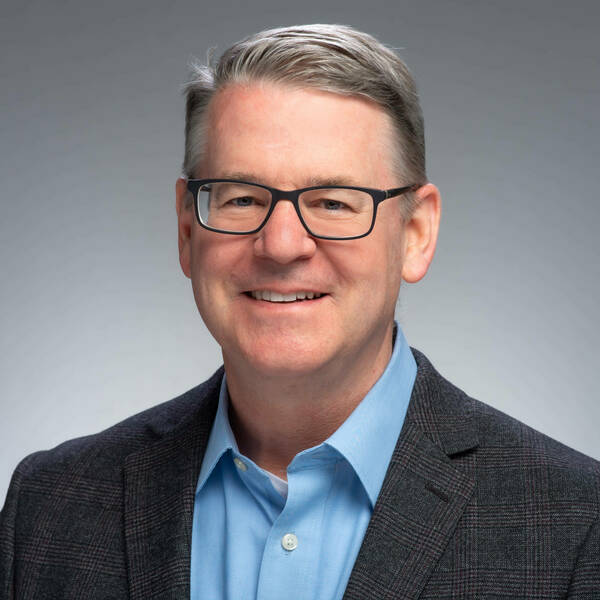
Now, with funding from the U.S. Army, researchers at the University of Notre Dame are launching an effort that could help reverse this trend. The team will apply conducted at the University on the physics of low-power antennas. Working with a set of industry partners, they aim to produce an antenna that delivers 5G-level performance while using less than ten percent of the energy.
The team is led by , an associate professor in the Department of Electrical Engineering and an affiliate of Notre Dame's . Chisum says the key to the new antenna is a kind of artificial dielectric material designed and built in his lab.
“Right now, a large portion of the cost to operate a cellular network is for electricity. If you look at a cell tower, you can see why: It uses a different antenna for each band, and these rely on active, powered chips,” Chisum said. “Our initial idea was simple: What if we could design similar capabilities into just one very wideband antenna by letting the physics of materials do the work normally done by many power-hungry chips.”

The new low-power antenna is a type of millimeter-wave gradient index (GRIN) lens antenna. Although GRIN lenses have existed for over a century, the idea of developing a GRIN lens antenna for 5G networks once seemed far-fetched to most researchers in the field of wireless technology. However, over the past eight years, Chisum and his lab have made groundbreaking discoveries in the fundamental science of wideband beam steering. These findings have allowed Chisum and his team to create one antenna that can operate over all the frequency bands for 5G, a feat once thought to be impossible.
The antenna’s wideband, low-power capabilities make it especially useful to the U.S. Army. The Army was involved in the development of 5G technology and relies on it not just for secure communications but also for tracking equipment and monitoring the health of soldiers. However, current 5G technologies are difficult and costly to set up, transport, and operate in the field.
“The Army has to operate 5G networks all over the world,” Chisum explained, “and 5G networks operate at different frequencies across the globe. Thus, a wideband solution like ours is an essential capability. And since it consumes very little power and is relatively small and lightweight, it can be integrated into a mobile platform.”
Once it is implemented, the technology will provide a “5G-on-the-move” solution with improved efficiency, safety, and versatility.
Chisum also emphasized that developing this new technology is the first step in integrating it into mobile networks for civilian use.
“The deployment of 5G millimeter-wave base stations in current 5G networks has stalled because operators cannot afford the cost of the current multi-antenna solutions. However, wideband 5G antennas based on GRIN lenses open up new possibilities for lowering cost and efficiency in commercial wireless networks,” Chisum said.
So far, Chisum and his team have a working prototype of their design produced in the lab one thin layer at a time through a detailed 100-hour process. The team is developing an efficient and cost-effective way to manufacture the device using cutting-edge 3D printing technology. It will also allow Chisum’s team to demonstrate the technology in the field, paving the way for inclusion in a 5G network.

To transition this technology from the lab into the field, Chisum’s lab has formed a team of industry partners. The team will include multiple leading vendors with expertise in wireless networks, antennas, and additive manufacturing uniquely suited to GRIN media.
"Nicolas Garcia, CEO of Cheshir Industries, said, “The Cheshir Industries team is proud and excited to lead the lens and array design efforts for Notre Dame's 5G-on-the-move antenna development program. This project represents not only an important step in advancing our nation’s wireless capabilities but also a major milestone in the commercialization and development of wideband GRIN antenna systems.” Cheshir Industries was launched with support from Notre Dame’s IDEA Center. It was co-founded by Chisum along with two graduates of Notre Dame’s Electrical Engineering doctoral program: Nicolas Garcia (‘22 Ph.D.) and Nicholas Estes (‘22 Ph.D.)."
Karlo Delos Reyes, Chief Customer Officer and Co-founder at Fortify, said, “As the leader in RF design and manufacturing, we at 3D Fortify are thrilled to collaborate with the University of Notre Dame and our industry partners to deliver cutting-edge technology. This partnership allows us to leverage our advanced capabilities to push the boundaries of what is possible in GRIN lens antenna design. Together, we’re working across the value chain to deliver a transformative solution that will pave the way for future civilian applications."
To learn more about advances in wireless technology at the University of Notre Dame, visit .
Contact: Jessica Sieff, associate director of media relations, 574-631-3933, jsieff@nd.edu
]]>










